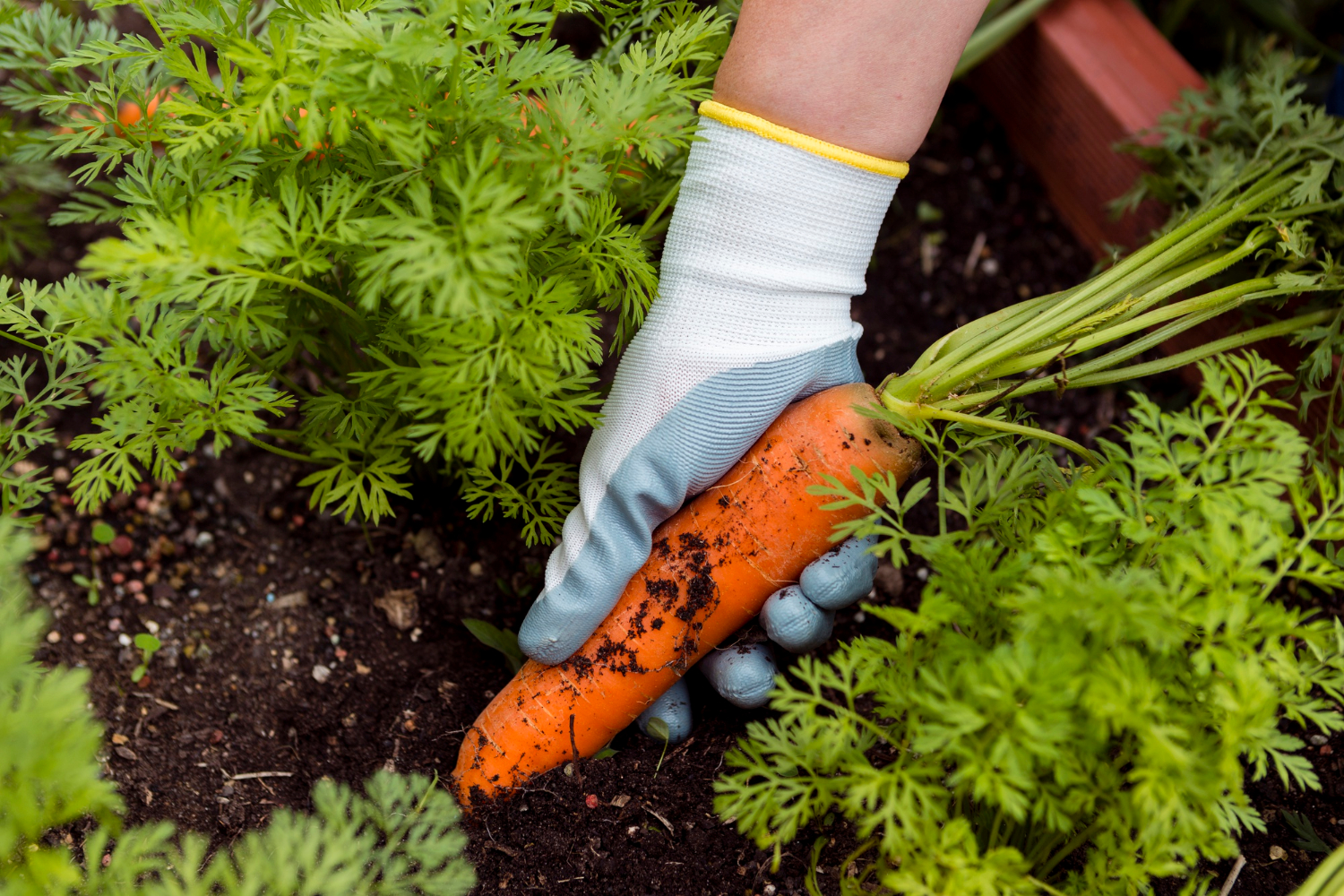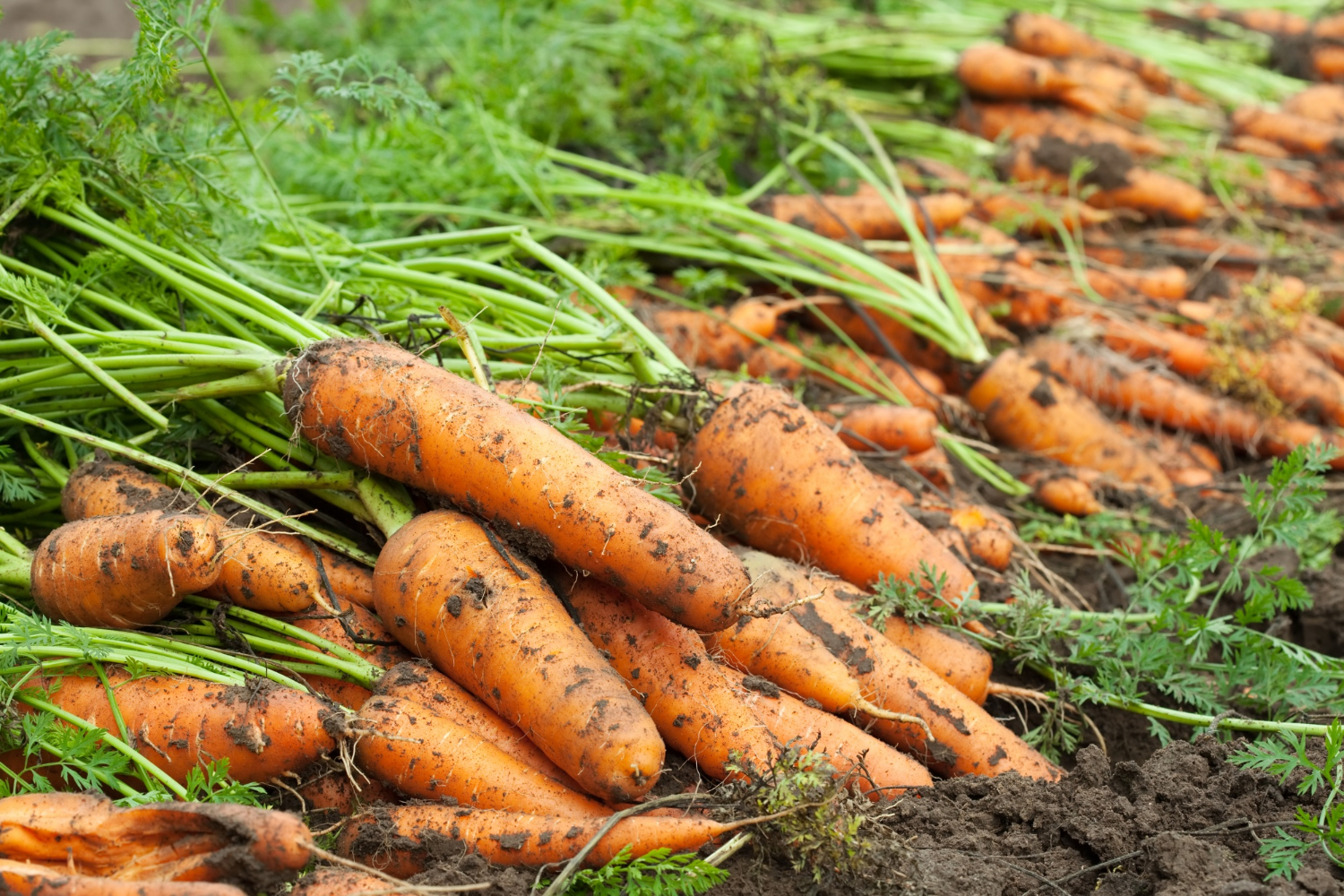Selecting the Right Carrot Varieties for Organic Home Gardening
Growing organic carrots at home can be a rewarding and fulfilling experience. Not only do you get to enjoy the taste of fresh, homegrown carrots, but you also have the satisfaction of knowing that they were grown without the use of harmful chemicals. However, before you can start planting your carrots, it’s important to select the right carrot varieties for organic home gardening.
When it comes to choosing carrot varieties, there are a few factors to consider. First and foremost, you’ll want to select varieties that are well-suited to your climate and growing conditions. Carrots are cool-season crops that prefer full sun and well-drained soil. If you live in a region with a short growing season, you’ll want to choose varieties that mature quickly, such as ‘Nantes’ or ‘Danvers’. On the other hand, if you have a longer growing season, you can opt for varieties that take longer to mature, such as ‘Chantenay’ or ‘Imperator’.
Another important consideration when selecting carrot varieties is the size and shape of the carrots you prefer. Carrots come in a range of sizes, from small, round ‘Paris Market’ carrots to long, slender ‘Imperator’ carrots. If you plan on using your carrots for juicing or grating, you may prefer longer, slender varieties. However, if you’re looking for carrots that are easy to snack on or cook whole, you may prefer shorter, rounder varieties.
In addition to size and shape, you’ll also want to consider the color of the carrots you want to grow. While orange is the most common color for carrots, there are also varieties available in purple, yellow, and white. Purple carrots, such as ‘Purple Haze’ or ‘Cosmic Purple’, contain anthocyanins, which are powerful antioxidants. Yellow carrots, such as ‘Yellowstone’ or ‘Solar Yellow’, are rich in beta-carotene, while white carrots, such as ‘White Satin’ or ‘Lunar White’, have a mild, sweet flavor.
When selecting carrot varieties for organic home gardening, it’s also important to consider disease resistance. Some carrot varieties are more resistant to common carrot diseases, such as carrot fly or root rot. Choosing disease-resistant varieties can help ensure a successful harvest and reduce the need for chemical interventions.
Lastly, don’t forget to consider the taste and texture of the carrots you want to grow. Some carrot varieties are known for their exceptional flavor and crisp texture. ‘Scarlet Nantes’ and ‘Bolero’ are popular choices for their sweet, crunchy taste, while ‘Dragon’ and ‘Atomic Red’ are known for their vibrant color and tender texture.
In conclusion, selecting the right carrot varieties for organic home gardening is an important step in growing successful and delicious carrots. Consider factors such as climate suitability, size and shape preferences, color variations, disease resistance, and taste and texture. By choosing the right carrot varieties, you can ensure a bountiful harvest of organic carrots that will delight your taste buds and provide you with a sense of accomplishment. So, get ready to dig in and start growing your own organic carrots at home!
Essential Tips for Preparing and Maintaining Organic Soil for Carrot Growth

Pic Source: freepik.com
Growing organic carrots at home can be a rewarding and fulfilling experience. Not only do you get to enjoy the taste of fresh, homegrown carrots, but you also have the satisfaction of knowing that they were grown without the use of harmful chemicals. One of the most important aspects of successful carrot growth is the preparation and maintenance of organic soil. In this section, we will discuss some essential tips for preparing and maintaining organic soil for carrot growth.
First and foremost, it is crucial to choose the right location for your carrot garden. Carrots thrive in well-drained soil that receives full sun. Look for a spot in your garden that gets at least six hours of direct sunlight each day. Additionally, make sure the soil is loose and friable, as carrots need loose soil to grow straight and long.
Before planting your carrots, it is essential to prepare the soil properly. Start by removing any weeds or grass from the area where you plan to plant your carrots. Weeds can compete with carrots for nutrients and water, so it is crucial to eliminate them before planting. You can either pull them out by hand or use a garden hoe to remove them.
Once the area is clear of weeds, it is time to amend the soil with organic matter. Carrots prefer soil that is rich in organic matter, as it provides essential nutrients and improves soil structure. You can add compost, well-rotted manure, or leaf mold to the soil to increase its organic matter content. Spread a layer of organic matter over the soil and use a garden fork or tiller to incorporate it into the top few inches of soil.
After amending the soil, it is important to ensure that it is well-drained. Carrots do not like to sit in waterlogged soil, as it can cause their roots to rot. If your soil tends to be heavy and clayey, you can improve its drainage by adding sand or perlite. Mix these amendments into the soil thoroughly to ensure even distribution.
Once your soil is prepared, it is time to plant your carrot seeds. Carrots are typically grown from seeds, as they do not transplant well. Sow the seeds directly into the prepared soil, following the instructions on the seed packet for spacing and depth. It is important to plant the seeds at the correct depth, as planting them too deep can result in poor germination.
After planting, it is crucial to keep the soil consistently moist until the carrot seeds germinate. Carrots need regular watering to ensure proper growth and prevent them from becoming woody or bitter. Water deeply and evenly, making sure the soil is moist but not waterlogged. Mulching around the carrot plants can help retain moisture and suppress weed growth.
In conclusion, preparing and maintaining organic soil is essential for successful carrot growth. Choose a sunny location with well-drained soil, remove weeds, and amend the soil with organic matter. Ensure proper drainage and sow the carrot seeds at the correct depth. Keep the soil consistently moist and mulch around the plants to retain moisture and suppress weeds. By following these essential tips, you can enjoy a bountiful harvest of organic carrots from your home garden.
Step-by-Step Guide to Growing Organic Carrots from Seed to Harvest

Growing organic carrots at home can be a rewarding and fulfilling experience. Not only do you get to enjoy the taste of fresh, homegrown carrots, but you also have the satisfaction of knowing that they are free from harmful chemicals and pesticides. In this step-by-step guide, we will walk you through the process of growing organic carrots from seed to harvest.
The first step in growing organic carrots is to choose the right variety of seeds. There are many different types of carrots available, each with its own unique flavor and characteristics. Some popular varieties include Nantes, Danvers, and Chantenay. It’s important to choose a variety that is well-suited to your climate and growing conditions.
Once you have selected your seeds, it’s time to prepare the soil. Carrots prefer loose, well-draining soil that is rich in organic matter. Before planting, remove any weeds or debris from the area and loosen the soil with a garden fork or tiller. Adding compost or well-rotted manure to the soil will help improve its fertility and provide essential nutrients for your carrots.
Next, it’s time to sow the seeds. Carrot seeds are very small, so it’s important to handle them with care. Create shallow furrows in the soil, about 1/4 inch deep, and space them about 2 inches apart. Place the seeds in the furrows, cover them with a thin layer of soil, and gently pat it down. Water the area thoroughly, being careful not to wash away the seeds.
As your carrots begin to grow, it’s important to keep the soil consistently moist. Carrots have shallow roots, so they are more susceptible to drying out than other vegetables. Water deeply once or twice a week, depending on the weather, to ensure that the soil remains evenly moist. Mulching around the plants can help retain moisture and suppress weeds.
Carrots require a steady supply of nutrients to grow properly. About a month after planting, you can begin to fertilize your carrots. Use a balanced organic fertilizer, following the instructions on the package. Avoid over-fertilizing, as this can lead to excessive foliage growth and small, misshapen carrots.
As your carrots continue to grow, it’s important to thin them out. Crowded carrots will compete for nutrients and may not develop properly. When the seedlings are about 2 inches tall, thin them to about 2-3 inches apart. This will give the remaining carrots enough space to grow and mature.
Harvesting your organic carrots is the final step in the process. Carrots are usually ready to harvest when they reach their mature size, which is typically around 2-3 months after planting. Gently loosen the soil around the base of the carrot and pull it out. Be careful not to damage the carrot or its foliage. Once harvested, carrots can be stored in a cool, dark place for several weeks.
Growing organic carrots at home is a simple and rewarding process. By following these step-by-step instructions, you can enjoy the taste of fresh, homegrown carrots while knowing that they are free from harmful chemicals. So why not give it a try and start growing your own organic carrots today?

